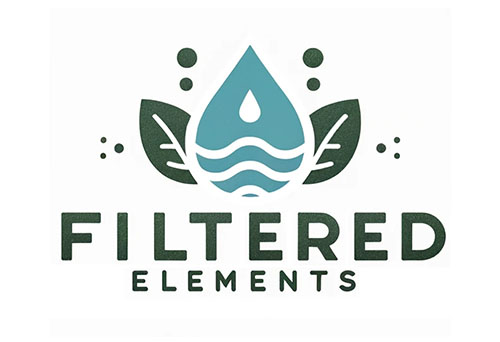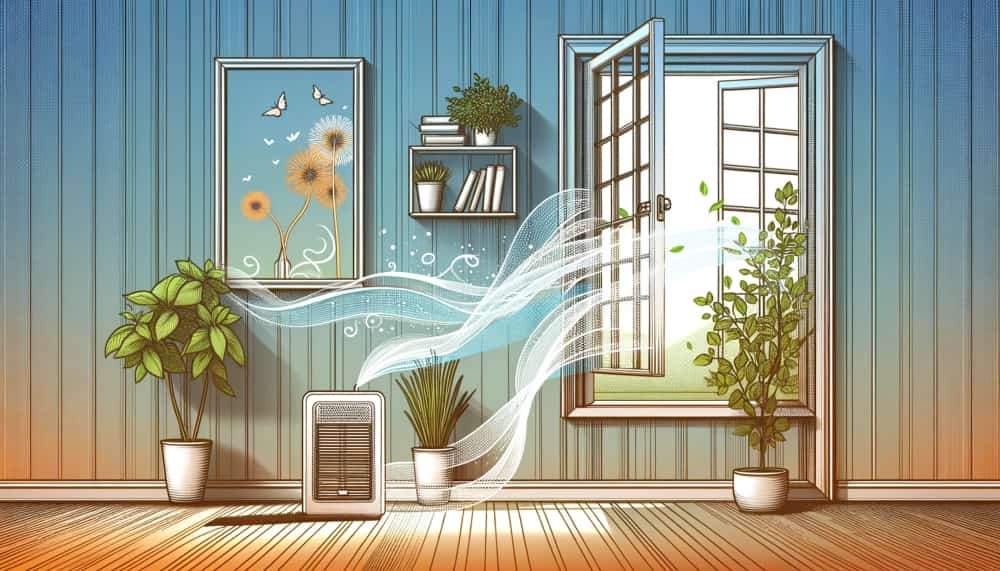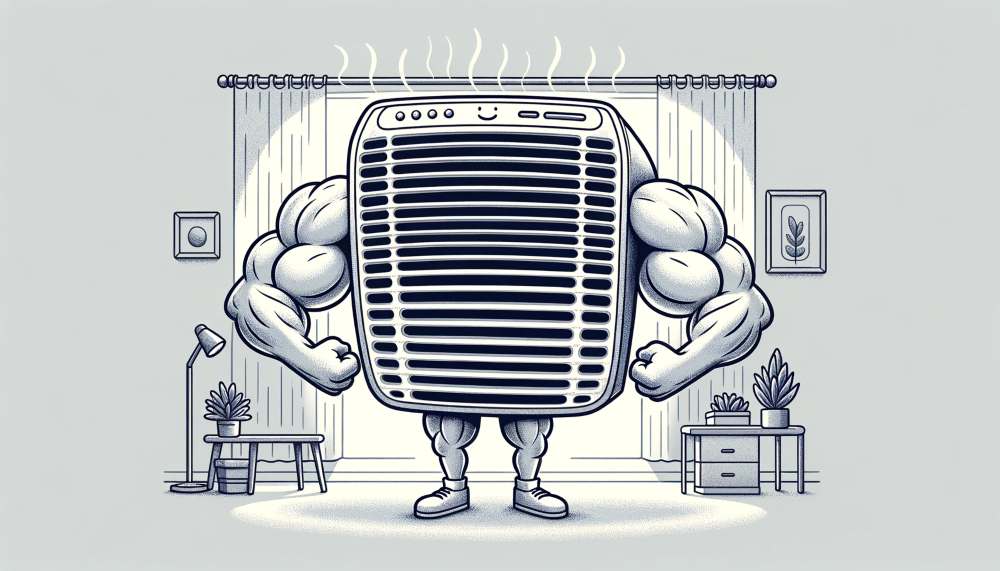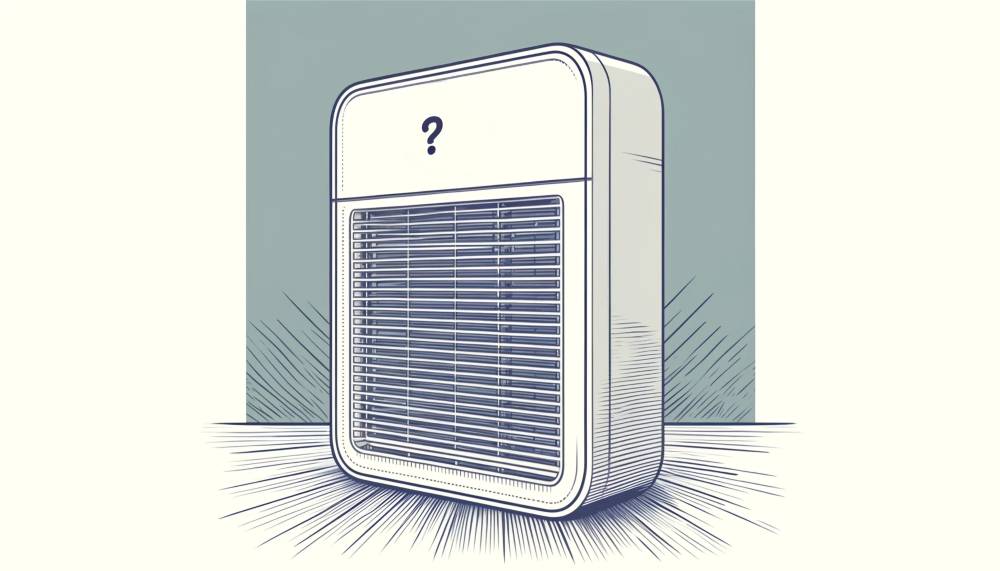Indoor air quality is crucial for a healthy home environment. While it is often overlooked, the air inside our homes can be filled with pollutants from everyday activities and external sources. From cooking fumes and pet dander to mold spores and chemical gasses, these contaminants can affect our health and comfort.
In fact, the EPA has stated that indoor air pollutants can be two to five and even 100 times higher than outdoor levels. This is why they have indoor air pollution ranked in the top five environmental health risks. But what can we do about it?
In most cases, indoor air quality levels can be improved quickly by simply changing a few habits. This article will provide real, practical tips on how to actively improve and maintain the air quality in your home, to ensure a healthier living space for you and your family. We’ll cover everything from optimizing ventilation to what tools you can get, to take control of your indoor air.
1. Ventilate When Appropriate

Opening windows is a simple yet effective way to enhance natural ventilation in your home. This allows for the exchange of stale indoor air for fresh outdoor air which helps to dilute and remove airborne pollutants naturally. However, it’s most beneficial when outdoor air quality is good and pollen counts are low.
In addition to natural ventilation, using exhaust fans in high-moisture areas like kitchens and bathrooms is critical. These fans help to expel excess moisture and pollutants directly outside, preventing them from circulating throughout your home. This is particularly important during activities that generate a lot of moisture or fumes, such as cooking, showering, or running large appliances.
2. Use Air Sealing Techniques
While good ventilation is crucial, it’s equally important to prevent unwanted outdoor pollutants from entering your home through leaks and gaps. Sealing these potential entry points helps maintain clean indoor air and improves energy efficiency by preventing the loss of conditioned air. This can be especially useful for highly polluted areas like in cities.
Use caulk or spray foam to seal gaps around window frames, door frames, and entry points for pipes and vents. This not only prevents pollutants like dust and pollen from entering but also blocks out moisture, which can lead to mold and mildew problems. In areas with high traffic and where different building materials meet, ensure tight seals to keep out both air and potential pests.
3. Upgrade Your Air Purification
To maintain clean air, regularly change your HVAC filters. These filters capture dust, pollen, and pet dander, preventing their recirculation. Replace filters every 90 days, or more frequently if you have pets, allergies, or live in a dusty area. This not only cleans the air but also enhances HVAC efficiency and longevity by avoiding airflow blockages.
For additional air quality improvement, consider getting one or multiple air purifiers for areas prone to pollutants, such as kitchens, bedrooms, or pet zones. Air purifiers can work alongside your HVAC system to capture finer particles like smoke, bacteria, and viruses. The best air purifiers have HEPA filters, capable of removing 99.97% of particles as small as 0.3 microns, and have been proven to improve indoor air quality.
Air purifiers are particularly beneficial for pet owners as indoor animals can greatly reduce air quality. Just be sure to get a pet safe air purifier that doesn’t emit ozone. Ozone is a gas that can be harmful to both pets and humans when used indoors.
4. Use Plants or Natural Alternatives
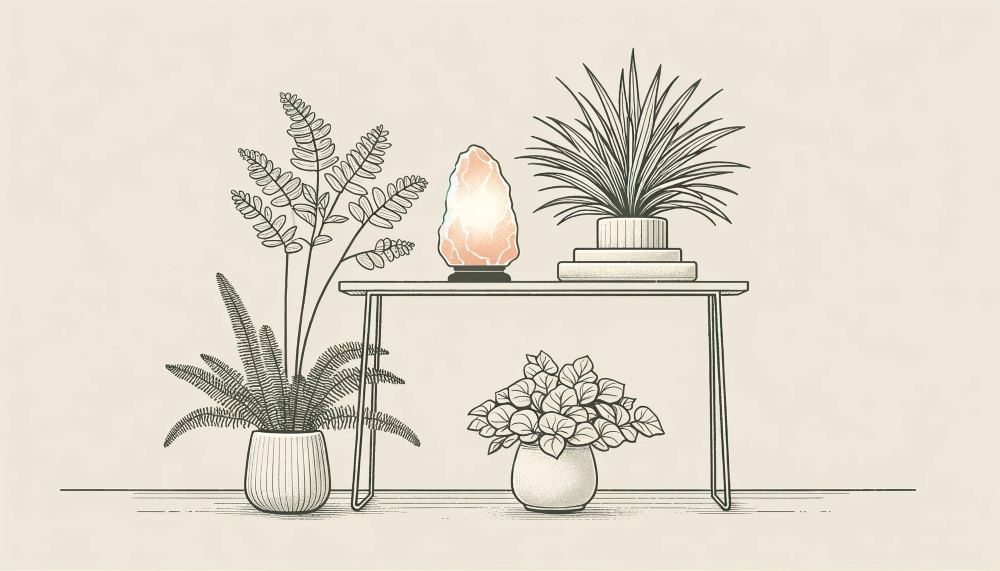
Indoor plants like ferns, lilies, and palm trees are effective at removing toxins and producing fresh oxygen, acting as natural air purifiers to enhance indoor air quality. These plants not only cleanse the air but also add aesthetic value to your home.
Himalayan salt lamps are another natural option that some believe can purify indoor air. Although the scientific evidence is mixed, these lamps are said to emit negative ions when heated, which may help reduce airborne allergens and irritants. Using these natural solutions can help maintain cleaner air in your home, offering a greener and more holistic approach to indoor air quality. Check out all of the benefits of Himalayan salt lamps.
5. Enhance Your Cleaning Routine
Regular vacuuming of rugs, upholstery, and other soft furnishings with a vacuum is important to reducing allergens in your home. Regular cleaning and vacuuming are crucial for maintaining high indoor air quality. As vacuums can stir stuff up, consider investing in a vacuum equipped with a HEPA filter, which is highly effective at trapping fine particles such as pollen, pet dander, and dust mites. This can significantly improve the air quality in your home, especially beneficial for those with allergies.
It is also important to remember that even lower-quality vacuums have filters that need regular maintenance. Cleaning or replacing these filters as recommended ensures your vacuum operates efficiently and continues to capture allergens effectively, preventing them from being thrown back out and around your home.
6. Switch to Cleaner Heating Options
Wood stoves might make your home feel cozy, but they also release harmful pollutants like particulate matter, carbon monoxide, and volatile organic compounds (VOCs). These can harm the air quality inside your home and pose health risks. Over time, breathing in these pollutants can cause respiratory problems and other health issues.
A better option for keeping your home warm without these risks is to use electric stoves or central heating systems. These alternatives don’t produce harmful by-products from burning, which means they help keep your indoor air clean. If financially feasible, switching to electric heating is a straightforward way to improve the air quality in your home while still staying warm.
7. Opt for Cleaner-Burning Candles

The draw of the design and smells of scented candles can often mask the potential air quality issues they bring, especially those made from paraffin—a petroleum byproduct. Paraffin candles release a slew of harmful chemicals, similar to those found in diesel engine exhaust. Instead, opt for candles made from beeswax or soy.
These natural materials burn cleaner and produce significantly fewer pollutants. Beeswax candles have the added benefit of ionizing the air and removing pollutants, making them an excellent choice for maintaining a fresh and clean indoor atmosphere.
8. Don’t Smoke Indoors
For cigarette or marijuana smokers, one of the most significant steps you can take to improve indoor air quality is to stop smoking indoors. Cigarette smoke contains over 4,000 chemicals, many of which are toxic and can linger in the air, on furniture, and in curtains, long after the smoke clears.
Similarly, marijuana smoke can introduce several of the same harmful substances, including tar and other carcinogens, into the air. By quitting indoor smoking or restricting it to outdoor areas away from the home, you can drastically reduce the level of airborne contaminants and protect the health of everyone in the home.
9. Control Moisture and Humidity
Maintaining proper moisture and humidity levels in your home is crucial for preserving indoor air quality and preventing health hazards. Excessive moisture is one of the primary culprits behind the growth of mold and mildew, which can release spores and toxic substances into the air, potentially causing respiratory issues and allergic reactions.
High humidity levels above 60% create the perfect conditions for mold and mildew to thrive on walls, ceilings, and hidden areas like behind wallpaper or inside ventilation systems. This persistent moisture can lead to serious health issues such as asthma, and persistent coughs, and even weaken the immune system.
Dehumidifiers are essential in managing moisture, particularly in damp areas of the home like basements, bathrooms, and kitchens. By pulling water from the air, these devices help keep humidity within the ideal range of 40-60%. This combats the growth of harmful allergens such as mold and dust mites. When choosing a dehumidifier, it’s important to consider the size of the area and the typical moisture levels to find a model that suits your specific needs effectively.
10. Implement A No Shoes Indoor Policy

Implementing a no-shoe policy indoors can significantly improve your home’s air quality. Walking through the house with your shoes on when coming from outside can bring in a lot of dirt and harmful substances like pesticides and bacteria from the outside. By taking off shoes at your home entrances, you can reduce the chance that these pollutants spread throughout your home. This is especially helpful for people with allergies or breathing issues, as it reduces their exposure to potential irritants.
Setting up a designated spot like a shoe rack or a mat at the entrance is a great reminder. It may also help to explain the benefits of a no-shoe policy to your household and guests so that it is followed. Having a small sign at the entrance and placing a seat near the door to aid in shoe removal, can serve as a friendly reminder and be helpful, especially for those who might have difficulty bending down.
11. Measure Your Indoor Air Quality
To improve indoor air quality, it’s important to know how polluted certain areas of your home are. You can get an air quality monitor to measure pollutants like fine particles and chemicals in the air. For accurate results, place the monitor in a central location away from kitchens, bathrooms, and doors.
Some air purifiers come with built-in monitors that not only clean the air but also provide real-time data on air quality. These purifiers adjust themselves based on the air quality, making them a practical option for maintaining clean indoor air. Regularly checking these readings can help you understand when to do something, like opening windows or running the purifier, to keep your indoor air healthy.
Final Thoughts
Improving and maintaining good indoor air quality is not just about comfort—it’s a crucial aspect of health care in any living space. By implementing simple changes like using air purifiers, controlling humidity, and maintaining a no-shoe policy, you can significantly reduce indoor pollutants.
Regularly monitoring the air quality also helps you stay informed about the air you breathe and make adjustments as needed. By taking these steps, you create a healthier environment that safeguards the well-being of you and your loved ones.
